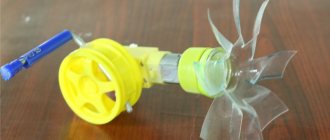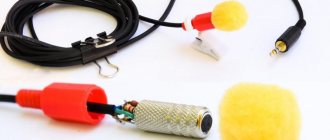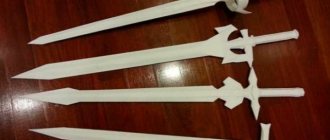This article will be of interest primarily to those who love and know how to make things. Of course, you can buy various ready-made devices and instruments, including solar photovoltaic products assembled or in bulk. But it is much more interesting for craftsmen to create their own device, not similar to others, but with unique properties. For example, a solar battery can be made from transistors with your own hands, and various devices can be assembled on the basis of this solar battery, for example, a light sensor or a low-power charger.
What is a transistor
In order to delve into the topic of various types of transistors, and specifically in our case, learn more about the Darlington transistor, I propose to first learn everything about the simplest transistor.
Let's figure out why it is needed and how it works. I would like to start with such a concept as a triode. This is basically a lamp that can control the current in a circuit. So, a transistor is also a semiconductor triode, only without a lamp. It has as many as 3 outputs. What is it for? Transistors are used to switch and convert current in a circuit while being powered by a small input current. They are used very often in electronics. For example, they are used in all control circuits of various electronic devices (in the same computer boards). Of course, sometimes they can still be replaced by relays and thyristors, but they also have their own significant drawbacks, but this, as you understand, is a completely different story. This is what a very ordinary transistor looks like:
Useful sources
- Horowitz P., Hill W. The Art of Circuit Design. Volume 1. - M.: Mir, 1993.
- Managing a Powerful AC Load
- Control of high-power DC loads. Part 1
- Control of high-power DC loads. Part 2
- Control of high-power DC loads. Part 3
- Clicking the relay correctly: switching powerful loads
- Managing a Powerful AC Load
- Controlling MOSFETs #1
- Modern high-voltage drivers of MOSFET and IGBT transistors
- Key on your shoulder! – features of the use of high-voltage drivers produced by IR
How does a transistor work?
When you and I, my friends, have figured out what this transistor is, let's find out how it works. It is designed quite simply, you just need to understand the principle. To do this, we introduce two very important concepts: emitter and collector. The emitter (as in the word emission) releases charges and they move towards the collector. So, in a state of rest, when, roughly speaking, everything is turned off, no current flows in the transistor, because there is a semiconductor junction between the emitter and the collector. However, when a small voltage is applied to the base of the transistor, the current begins to flow and it can even be amplified. How? Oscillations of a small current are exactly repeated, but with a larger amplitude. Here is a circuit diagram of a simple transistor:
Usage example
If you want to make your own device that requires a phototransistor, you can develop a simple intelligent system. According to this scheme, the robot will react to light, depending on the settings, it will run away from it or, on the contrary, go to the light source.
To make a robot yourself, you need to prepare:
- Chip L293D;
- A small motor, you can even take it from a children's toy;
- Any domestic phototransistors and field-effect resistors with a resistance of less than 200 Ohms;
- Cables for connection and housing where the mechanism will be located.
Robot circuit
As you can see from the diagram, the phototransistor here is a kind of microcontroller, like ATMEGA, which detects the light source, even its connection is similar. Using a soldering iron, you can make a simple mechanism that will even follow a shadow. Similar imported devices are produced by BEAM, but, naturally, they have a more powerful optocoupler. For the device to operate, you only need to correctly connect the phototransistor to the circuit and power supply.
The designation contains GDR and VCC clauses. The first is grounding, the second is power. Please note that next to the power supply there is a 5V icon - this means that the battery must be at least 5 volts.
The operating principle of such a robot is simple: when light hits the phototransistor, the motor on the chip turns on. This is realized because the receiver has given a positive signal. The homemade motor starts and the device begins to move.
The use of a resistor in this circuit is necessary to regulate the electrical current. Also, the durability of the optical part depends on the resistance of the resistor; if it overheats, the phototransistor will need to be replaced. To work, it is very important to connect all the wires in the same way as in the diagram. A switch can be attached to the robot from an ordinary ballpoint pen; it will break the connection between the microcircuit and the phototransistor. The robot is tested by examining its reaction to light and shadow.
or
What are the differences between different transistors?
Using a simple transistor as an example, we analyzed its operating principle, but there are a great many of them. Let's learn to distinguish them and find out why each of them is needed.
Bipolar
Bipolar transistors are the most popular. In a semiconductor, such transistors have two pn junctions. Charge is transferred through them by holes and electrons.
Among them, there are also several subtypes (they depend on the location of the transitions and the number of electrodes), including:
- compound transistor pnp type;
- composite transistor npn type;
- more complex multielectrode ones (there can be 2 emitters at once);
- heterojunction transistors.
Avalanche transistors
This is a truly interesting type of transistor because it works very efficiently and at the same time very quickly. Their main advantages are high operating voltages and, of course, turn-on speed, and this is very important in electronics. Scientists are still puzzling over how to use these transistors with maximum efficiency, although they are still showing amazing results.
Unijunction transistors
There are such transistors in the world. There is only one transition, so the classification is much simpler:
- the first type is with a “p” base;
- and the second one is with “n” base.
Transistors with control junction
This is also a very interesting and unusual type of transistor, because, as the name suggests, it has a controlled transition, which makes it even more universal, but also makes it more expensive. We will not dwell on the subspecies, as they are all approximately the same as the previous ones.
Insulated Gate Transistors
And what kind of shutter is this, you might think. I'm telling you. As I wrote above, the transistor starts working when a small voltage is applied to it. So, the electrode to which voltage is applied is called a gate. There is nothing special here, it’s just that the gate itself is isolated, which gives more opportunities to control the transistor and for some tasks this is indeed very useful.
Now that we know quite a lot about transistors, we invite you to delve into history and find out how that Darlington transistor came to be.
The history of transistors
At the dawn of the past centuries at the end of the 19th century, physicists and practitioners (Guthrie, Brown, Edison, Bowes, Picard, Fleming) from different countries made a fundamental discovery and received patents for a “detector”, “rectifier” - that’s what the diode was called then. The diode was followed by the epoch-making discovery of the transistor. Listing the names of scientists from different countries who put their head and hands to the discovery of the transistor would take many lines.
The main theorists are Shockley, who worked at Bell Telephone Laboratories, as well as his colleagues Bardeen and Brattain.
From left to right: Shockley, Bardeen and Brattain
As a result of their work, in 1947, the first sample of a working point-type germanium transistor was obtained, and on its basis, in the same year, the first amplifier was developed, which had a gain of 20 (10 times) at a frequency of 10 MHz.
Serial production of point-point transistors by Western Electric began in 1951 and reached about 10,000 units per month in 1952. In the USSR, the first point-point transistor was created in 1949. Serial production of point-point transistors was launched in 1952, and planar transistors in 1955. This was followed by the following discoveries in theory and technology: transistors based on grown junctions (1950), alloy transistors (1952), diffuse meta-transistors (1958), planar transistors (1960), epitaxial transistors (1963) .), multi-emitter transistors (1965), etc.
How did our hero, the Darlington transistor (hereinafter referred to as TD), appear among them? Darlington is a city in the UK. However, people can also have surnames based on cities or vice versa. This is an employee of the same Bell company - Sidney Darlington
Sydney Darlington
An article about the Darlington transistor in English. language can be read here.
Why was this “sweet couple” needed? The fact is that the first transistors had very mediocre characteristics, if you look at today's successes. First of all, the gain is low. Now this seems strange - just think, a cascade connection is elementary! But then, in 1953, this was pioneering work.
Transistor parameter designations
Let's agree on the designations of certain parameters, abbreviations that we will need when discussing, calculating and modeling circuits. For this we will use the designations generally accepted in datasheets (datasheet - technical description or passport for a radio element).
Abbreviations:
Basic parameters of the transistor according to the datasheet:
Parameters (set, measured or calculated):
Transistor Basics
What can we say here that is new? Never mind! But it's still useful to review the basics, isn't it? 
Basic dogmas about the bipolar transistor:
- A transistor is a current device. The base current is controlled by the collector current.
- The transistor has only three terminals. Base (B), collector (K) and emitter (E) and, respectively, in English. B (Base), C (Collector), E (Emitter).
- The emitter current is the sum of the collector and base currents. IE = IK + IB
- The current gain in a circuit with OE is the ratio of the collector current increments to the base current. h21e (β)=ΔIK / ΔIБ.
- h21e depends on the collector current. At its minimum or maximum values, h21e tends to zero.
- At the input (with reverse voltage), the transistor resembles a diode in direct connection.
- At the input (with reverse voltage), the transistor resembles a zener diode.
- The transistor in the closed state still gives in and gives off leakage current.
- A transistor base that is not connected anywhere and hangs in the air is its death. Therefore, it is imperative to connect the base to ground through a high-resistance resistor.
- The transistor in the open state will provide a non-zero voltage drop at the Base-Emitter junction and it will be approximately hundreds of milliVolts, or more precisely from 0.5-0.7 Volts.
- The transistor does not like high frequencies. You know, all sorts of Miller effects and stuff.
- For high load power, the transistor housing is made in a certain way so that it can be placed on a radiator
- The safe operating area (OSR) is all transistor limitations when combining the maximum current and voltage
- Minimum transistor noise is achieved at minimum optimal collector currents
- The maximum performance of the transistor is achieved at maximum optimal collector currents.
Great! Having learned a lot about the history of transistors and refreshed the basics of transistors in our heads, we return to the Darlington transistor, because we still do not understand why it is so remarkable.
Examples of triacs
Examples of triacs are given in the table below. Here is the holding current, - the maximum current, - the maximum voltage, - the unlocking current.
| Model | ||||
| BT134-600D | 10 mA | 4 A | 600 V | 5 mA |
| MAC97A8 | 10 mA | 0.6 A | 600 V | 5 mA |
| Z0607 | 5 mA | 0.8 A | 600 V | 5 mA |
| BTA06-600C | 25 mA | 6 A | 600 V | 50 mA |
From the point of view of the microcontroller, the relay itself is a powerful load, and an inductive one at that. Therefore, to turn the relay on or off, you need to use, for example, a transistor switch. The connection diagram and also the improvement of this scheme were discussed earlier.
Relays impress with their simplicity and efficiency. For example, the HLS8-22F-5VDC relay is controlled by a voltage of 5 V and is capable of switching a load that consumes a current of up to 15 A.
The main advantage of the relay - ease of use - is overshadowed by several disadvantages:
- this is a mechanical device and the contacts can become dirty or even welded to each other,
- lower switching speed,
- relatively large currents for switching,
- contacts click.
Some of these shortcomings are eliminated in so-called solid-state relays. These are, in fact, semiconductor devices with galvanic isolation, containing inside a full-fledged powerful switch circuit.
First about why compound
As you already understand, the transistor was invented by the engineer Darlington, but in the end this invention received a double name. On the one hand, it is a Darlington transistor, but on the other hand, it is a composite transistor. So why composite? After all, when we talked about species, there was no talk about any components. It's simple, my friends. Darlington decided to use 2 bipolar transistors at once. They were implemented on one crystal made of silicon and there, naturally, were 2 transitions. In the West, they are used to calling this invention a Darlington transistor, but in our country it is simply called a composite one. Well, let's find out even more about him.
Inductive Load Control
When driving an inductive load such as an electric motor, or when there is noise on the line, the voltage may become high enough to cause the triac to open spontaneously. To combat this phenomenon, it is necessary to add a snubber to the circuit - this is a smoothing capacitor and a resistor in parallel with the triac.
The snubber doesn't improve the emissions situation much, but it's better with it than without it.
The ceramic capacitor must be designed for a voltage greater than the peak in the power supply. Let us remember once again that for 230 V this is 325 V. It is better to take it with a reserve.
There are also triac models that do not require a snubber. For example, BTA06-600C.
So what's so special about this?
In order to understand the main advantages of a composite transistor, you need to remember why a transistor is needed in the first place. Of course, it also increases the current. And each transistor has its own gain, that is, how many times the current is amplified by a given transistor. So, let’s imagine that for one transistor this number is 60, and for the other 100. I note that each new transistor does not add the coefficient, but multiplies it, which means that in the end we will get a final force of 6000 and this is much more than the figure.
Even this can still be improved
One not very famous engineer, calling himself Siklai, saw how a compound transistor worked and was very impressed. At first, he thought that this was truly the limit of perfection, but one day an insight came to him and he figured out how to make this device even more effective. The resulting transistor was called a complementary Darlington transistor. It consists of bipolar transistors of different conductivities. What does this give? Sometimes this helps increase the gain even further, which is exactly what you need. Here, take a look at the diagram:
Pros and cons of a composite transistor
If we talk about the advantages of this wonderful device, then this is, of course, a very high gain, which allows you to run the transistor even with a very low base current. However, there are also disadvantages, as always. It would seem that this might not be the case here, but it might be. The fact is that there is no smell of performance here, so the Darlington transistor is mainly used in low-frequency circuits. Usually they are installed on the output stages of circuits, as well as in electric motor control units - there they really have their place. Also, many modern cars cannot do without them, because they are the most important part of the electronic circuit switch in the ignition system.
This is the circuit that radio amateurs use when they make a compound transistor with their own hands (using a Darlington transistor together with an electric motor):
Types of control
Let's assume that we only need to turn on or off the load at a low frequency. The parts of the circuits that solve this problem are called keys. We will not consider PWM controllers, dimmers, etc. (almost).
Conventionally, three groups of methods can be distinguished:
- DC load control.
- Transistor switch based on a bipolar transistor.
- Transistor switch based on a MOS transistor (MOSFET).
- IGBT transistor switch.
- AC load control.
- Thyristor switch.
- Triac key.
- Universal method.
- Relay.
The choice of control method depends on both the type of load and the type of digital logic used. If the circuit is built on TTL chips, then it should be remembered that they are controlled by current, in contrast to CMOS, where control is carried out by voltage. Sometimes it's important.
Let's compare a compound transistor and a push-pull one
Consider the previous circuit, which uses a compound transistor. If a current of 1 mA is applied to the base, then this circuit will amplify it 1000 times, and as a result, a current of 1000 mA will flow to the collector. I note that instead of an electric motor, we can connect both a relay and a light bulb, for example, and with the help of them we can already switch large loads.
What if we put a simple Darlington transistor into the transistor of the engineer Sziklai? Then we will have something like a push-pull amplifier. This is so because only one of the two transistors can be open at a time. Composite transistor circuit:
Here the input voltage will be inverted and the output will be reverse to the original voltage. In order to make the circuit more universal, an inverter is usually installed at the input. Thus, the current is inverted 2 times.
Board mounting
To give a single-transistor single-band receiver with a continuously adjustable variable capacitor a constructive appearance, mount it on a board made of sheet metal, textolite or vinyl plastic with a thickness of 1.5...2 mm (Fig. 4). Approximate dimensions of the board: width .80...65 mm, length 120... 150 mm.
The free space on the board will later be occupied by parts of the bass amplifier. As mounting posts for resistors and capacitors, use pieces of wire with a diameter of 1...1.5 and a length of 8...10 mm, driving them into the holes in the board (Fig. 4). Make connections between mounting posts with conductors from the bottom of the board and be sure to solder them: reliability of contacts at the connection points is ensured only by soldering.
Rice. 4. Installation of the receiver circuit on the board, soldering of parts.
After finishing the installation, check (using the schematic diagram of the receiver) for errors, unreliable contacts, or short circuits between exposed conductors. If everything is in order, then connect the antenna and grounding, turn on the power and listen to the entire range of waves covered by the receiver.
Where else is a compound transistor used?
Very often a compound transistor is used with a Szyklai transistor paired in one circuit. For example, 2 electric motors in many VCRs were controlled by these transistors.
Also based on the Darlington circuit, the ULN2003A microcircuit was created, which is often used in amateur radio assemblies.
You can also watch a video where they talk in detail about composite transistors:











